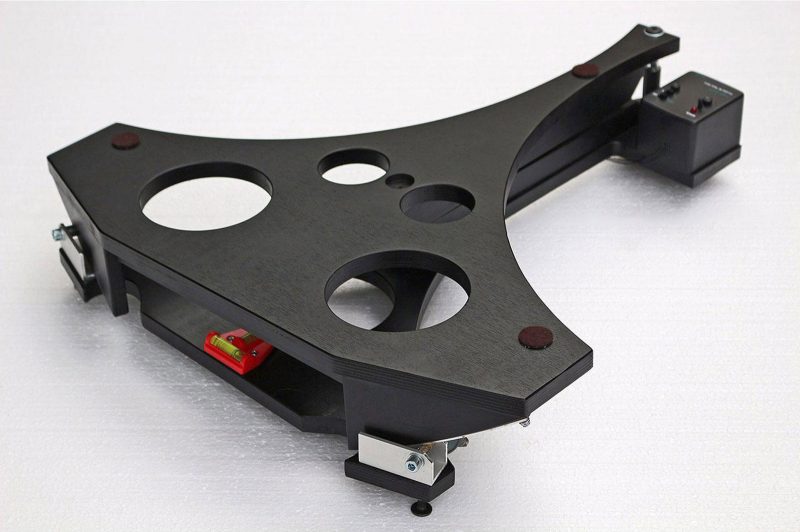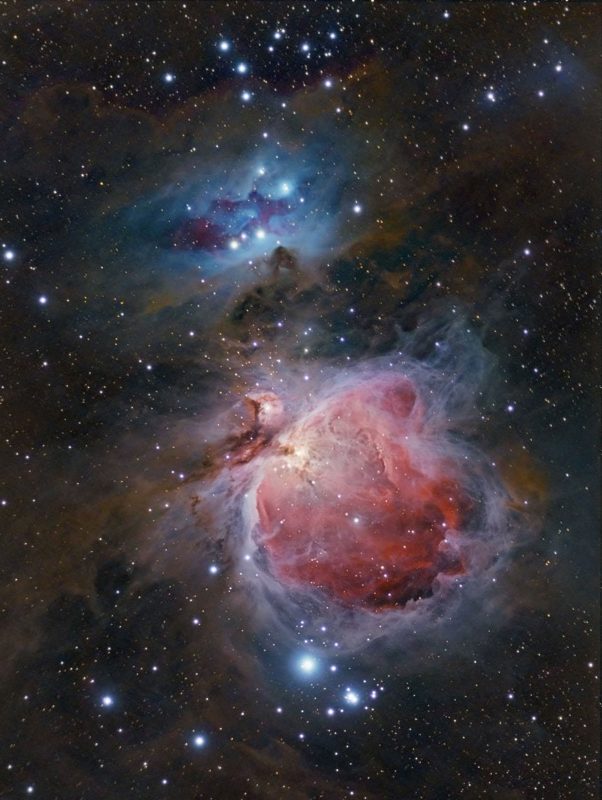A Guide to Choosing an Equatorial Telescope Mount

If you want to observe or photograph the night sky using a telescope, it is a good idea to have some form of telescope mount.
It will, after all, be practically impossible to make any meaningful observations just by holding the telescope in your hands.

The supports that astronomical telescopes are anchored by are called mounts.
There are two main types of mounts: alt-azimuthal (alt-az) and equatorial.
While alt-az mounts can be very useful for visual observations (especially Dobsonian mounts) or for beginner observers, they are very inconvenient for astrophotography.
You need to move the telescope on two axes at the same time in order to keep an object centred in the field of view. Even if you do this very precisely, after a while, the field of view will start to rotate.
Equatorial telescope mounts are designed to easily track the apparent motion of celestial objects across the night sky, making them ideal for visual observing for longer durations (especially for planetary observations) and astrophotography.
Read more: How to Take Photos of the Night Sky Through a Telescope
Equatorial mounts
There are several types of equatorial mounts to consider, including the German equatorial mount (GEM), the fork mount, and the equatorial platform.
Read more: 6 Best Telescopes for Astrophotography
The German equatorial mount
The GEM is the most common type of equatorial mount used in amateur astronomy. It consists of a declination axis and a right ascension (RA) axis that is tilted to align with the observer’s local latitude.

The telescope is mounted on the declination axis.
Having the RA axis parallel to the rotation axis of the Earth, the GEM (like any other equatorial mount, actually) allows you to track the apparent motion of the sky by moving the system around the right ascension axis (also known as the polar axis) only.
GEMs are known for their stability and accuracy, making them ideal for astrophotography. A very interesting and well-balanced version of the German equatorial mount is the center-balanced equatorial made by iOptron.
The fork mount
The fork mount is another type of equatorial mount that consists of a fork-like structure that holds the telescope.

The telescope is mounted between the arms of the fork, and the fork is attached to a base (usually called a wedge) that allows for altitude and azimuth adjustments.
Fork mounts are typically used in larger and heavier telescopes (like Schmidt-Cassegrains or big telescopes in professional observatories) and are known for their compactness and ease of use.
Equatorial platforms
Equatorial platforms are a simple form of an equatorial mount that does not require a tripod or declination axis.

They consist of a rotating platform that is tilted to match the observer’s local latitude, and the telescope is mounted on the platform. As the platform rotates, it compensates for the Earth’s rotation, allowing for tracking of celestial objects.
Equatorial platforms are portable and easy to use but may have limitations in terms of stability and accuracy for long-exposure astrophotography. Such platforms are usually used for large amateur Dobsonian telescopes.
The star tracker
The star tracker is a very popular and relatively new type of equatorial mount. Lots of such entry-level equatorial mounts designed for astrophotography with a camera and lens (or small telescopes) have been launched during the past maybe 10 years.
This kind of compact and light mount has been around for more than four decades, but it never got to today’s popularity.
With the advent of digital cameras, it made a lot of sense for astronomical instrument manufacturers to develop such a product.

Photographic film needed lots of minutes of exposure (and thus accurate tracking for a long period) to achieve the same results that digital sensors achieve in a significantly shorter time.
The star tracker is usually based on a GEM and is accurate enough to track lenses shorter than 200mm for a few minutes.
Some more advanced trackers (like the Fornax Mounts LighTrack II or the Astrotrac) allow for longer exposures and longer focal lengths but are almost triple the price of a usual star tracker.
Read more: 6 Best Cameras for Astrophotography
Features and components of the equatorial mount
An equatorial mount is made up of several parts.
Tripod
The tripod is the base of the equatorial mount and provides stability and support for the entire setup. It should be sturdy and level to ensure accurate tracking.
RA Axis
The right ascension (RA) or polar axis is the main axis of the equatorial mount and is aligned with the celestial pole to allow for tracking of celestial objects as they move across the sky.
It is tilted to match the observer’s local latitude, and adjustments can be made to align it accurately. Practically, this axis moves around the Earth’s rotation axis and along the Celestial Equator.

Declination Axis
The declination axis is perpendicular to the RA axis and allows for adjustments in the vertical direction relative to the plane of the Celestial Equator.
The telescope is typically mounted on the declination axis, and it allows for adjustments to point the telescope at different declinations North or South of the Celestial Equator.
Polar Alignment Scope
Many equatorial mounts come with a polar alignment scope (often illuminated and mounted inside the RA axis), which is used to align the mount with the celestial pole.
It allows for precise polar alignment, which is crucial for accurate tracking and astrophotography.
Counterweights
Counterweights are used to balance the telescope on the mount, ensuring smooth and accurate tracking. They are typically attached to the declination axis and can be adjusted to achieve proper balance.
Motor Drive or Go-To System
Some equatorial mounts come with motor drives or Go-To systems, which automate the tracking process.
Motor drives use motors to rotate the mount and keep it aligned with celestial objects, while Go-To systems use computerized databases and motors to automatically locate and track celestial objects.
Polar alignment
Proper polar alignment is essential for accurate tracking and astrophotography with equatorial mounts. It involves aligning the mount with the celestial pole using the polar alignment scope or other alignment techniques.

Once the mount is accurately polar aligned, the telescope can track celestial objects as they move across the sky, allowing for prolonged observations and astrophotography.
Read more: 7 Best Astrophotography Software for Night Sky
Choosing an equatorial mount
When selecting an equatorial mount, consider the following factors.
Payload Capacity
Ensure the mount can support the weight of your telescope, camera, and other accessories. Check the manufacturer’s specifications for the recommended maximum payload capacity. Always get a mount that is designed for a load larger than the weight of your gear.
Stability and Damping
Look for a mount that offers stability and damping capabilities to minimize vibrations and improve image quality during observations or astrophotography.
Tracking Accuracy
A mount with precise tracking capabilities is essential, especially for astrophotography. Look for mounts with low periodic error and high tracking accuracy.

Portability and Setup
Consider the size, weight, and ease of setup of the mount, especially if you plan to transport it frequently or have limited storage space. If you need a mount that fits carry-on luggage, think about getting a star tracker.
Budget
Equatorial mounts vary widely in price. Determine your budget and compare different options to find the best balance between features and affordability.

Almost all telescope manufacturers make equatorial mounts. Brands to look for are Sky-Watcher, Celestron, iOptron, or Losmandy.
Read more: The Ultimate Guide to Astrophotography
In conclusion
As in any other field of astrophotography, choosing your equatorial mount seems to be a daunting process.
It will be a lot easier to select the proper mount for your needs if you get the chance to test a few mounts before making a decision. This is one of the reasons I strongly advise you to join a local astronomy club.
Besides getting the opportunity to see and try different pieces of gear, you will meet like-minded people. And it’s wonderful to share the night sky with them.
Clear skies!





